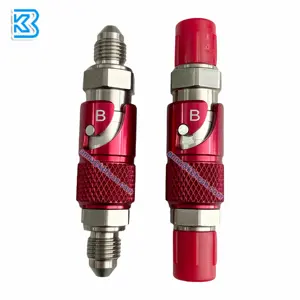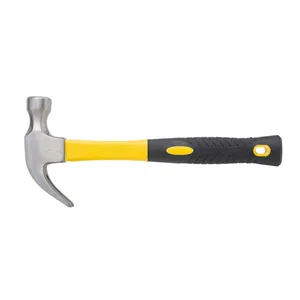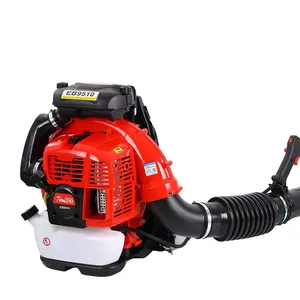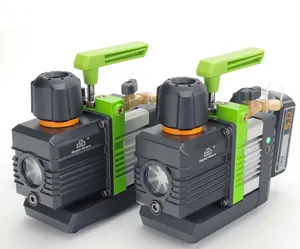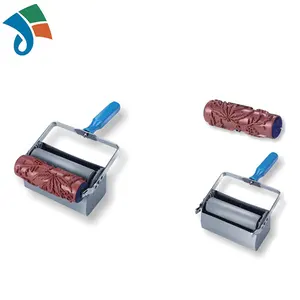Popular in your industry
































































































































































































Top categories
About garden hoe types
Introduction
Gardening is an art, and like any art, it requires the right tools to create a masterpiece. One such indispensable tool is the garden hoe. But did you know that not all garden hoes are created equal? Each type of hoe is designed for a specific task, and using the right one can revolutionize your gardening experience. This comprehensive guide will delve into the different types of garden hoes, their specific applications, and how to choose and maintain the right hoe for your gardening needs. Let's embark on this journey to make your gardening tasks much easier and more efficient.
Understanding the Importance of the Right Garden Hoe
The right garden hoe can revolutionize your gardening experience. Often, we struggle with traditional hoes, finding them more of a hindrance than a help. However, this is usually because we're using the wrong type of hoe for our specific task. For instance, the classic draw hoe is excellent for breaking up clods of dirt and turning over new garden beds, but not the best for weeding. By understanding the different types of garden hoes and their specific applications, we can make our gardening tasks much easier and more efficient.
The Anatomy of a Garden Hoe
A garden hoe, an essential tool for any serious gardener, has a basic structure: a long handle with a paddle, blade, or stirrup at the end, typically angled to the handle. Its primary uses are to cultivate garden soil and remove weeds. The paddle, or draw hoe, is a general hoe with a small rectangular paddle, approximately 6 by 4 inches, angled at 90 degrees. It dislodges weeds by the root or mounds and shapes soil. Other variations include the stirrup hoe, collinear hoe, and the Warren or Dutch hoe, each designed for specific tasks and spaces.
Types of Garden Hoes
Garden hoes come in a variety of types, each designed for specific tasks and soil conditions. The 'Digging Hoe' is the oldest style, used for chopping through sod and tilling soil. It has a heavy blade or tines that chop into the soil at a 45-degree angle. 'Draw Hoes' are used for weeding, pulling or drawing them towards you to scrape at or below the soil surface. They have a light hoe head and are not meant for deep digging. Each type of hoe has its pros and cons, and understanding these can help you choose the right tool for your gardening needs.
Draw Hoe
The Draw Hoe is a traditional garden tool, often associated with large-scale tasks rather than fine details. Its use involves a drawing action: chop into the soil, then pull or draw the head towards yourself to break up clods into the furrow. Despite its reputation for being a tough tool to handle, it's actually a good all-purpose tool, especially effective for breaking up clods of dirt and turning over new garden beds.
Scuffle Hoe
The Scuffle Hoe, also known as an oscillating or stirrup hoe, is a popular weeding tool. It features a trapezoidal ring of sharpened metal shaped like a stirrup, attached to a handle about 5 feet long. The hoe is used by a push-pull motion just under the soil surface to sever plant stems or roots. It's particularly effective on small to medium-sized weeds and dense flushes of seedlings. However, it's less effective on plants that grow from underground storage structures or those that are woody. Regular sharpening helps maintain optimal performance. The tool is lightweight, making it ideal for treating low-density weed infestations and very localized seedling flushes of weeds.
Dutch Hoe
A Dutch hoe, also known as a scuffle hoe, is a versatile tool for garden maintenance. Its sharp, wide blade is ideal for severing the roots of weeds just under the soil surface. The long handle allows for comfortable use while standing upright. Dutch hoes can vary in blade shape, material, and price. Some Dutch hoes feature teeth on the blade to hook out tougher weeds. These hoes are praised for their maneuverability and efficient cutting action. Choosing the right Dutch hoe depends on your specific gardening needs and the layout of your garden.
Mortar Hoe
A Mortar Hoe is a unique type of garden hoe, characterized by the holes in its otherwise flat blade. These hoes are specifically designed for mixing materials like mortar and sand into concrete. The distinctive holes in the blade allow the material to flow through, creating a mixture that's viscous enough to pour. This makes the Mortar Hoe an essential tool for tasks involving concrete mixing.
Choosing the Right Garden Hoe for Your Needs
Choosing the right garden hoe is crucial for efficient gardening. There are four main factors to consider when selecting the best garden hoe. These factors ensure that your tool is suitable for your specific gardening needs. Moreover, using your garden hoe when the soil is dry and maintaining a comfortable upright posture can make your gardening tasks easier. It's also important to clean the blade after each use, sharpen the tool when necessary, and store it indoors to prolong its life.
Factors to Consider
Choosing the right garden hoe is not just about the type of hoe, but also about your height and the handle length. Most hoe handles are about 5 ft. in length, suitable for an average-sized person. However, if you're taller, you may need a long-handled hoe to avoid bending too much. Conversely, if you're petite, a long hoe might be unwieldy, and you may need to shorten the handle. The blade angle also plays a crucial role in the hoe's effectiveness. For instance, a draw hoe should have an angle between the back of the blade and the ground between 20 and 30 degrees for optimal performance.
Specific Hoe Types for Specific Tasks
The draw or paddle hoe is excellent for slicing off weeds in the garden. To weed with a stirrup hoe, use a back and forth wiggling action. This tool slides just below the soil surface, cutting the roots of the weeds. A Warren or Dutch hoe is perfect for prepping your garden for planting seeds. These specific hoe types are designed for specific tasks, making your work in the garden much easier and more efficient.
Maintaining Your Garden Hoe
Maintaining your garden hoe is crucial for its longevity and effectiveness. Regular cleaning and proper storage are essential. Use boiled linseed oil to condition the wood handles and protect the metal parts, creating a barrier against rust. Ensure tools are dried thoroughly before storing. If rust does appear, treat them with linseed or mineral oil. Don't forget to care for the wood handles as well. Minor cracks can be reinforced with heavy-duty tape, while severely cracked handles should be replaced immediately to prevent injury.
Cleaning and Storing
Maintaining your garden hoe involves keeping it clean and storing it properly after each use. This is essential for its longevity. You can use boiled linseed oil to condition the wood handles and protect the metal parts of the hoe. This oil creates a barrier between the metal and oxygen, preventing rust. Apply it liberally over the entire tool, let it sit for 15 minutes, and then wipe off the excess with a dry cloth. Ensure your tools are dried thoroughly before storing to prevent rust. If sap is present, solvents like mineral spirits can be used for removal.
Sharpening and Repairing
Maintaining the sharpness of your garden hoe is crucial for effective gardening. Dull blades can result in damaged plants, making them more susceptible to disease. Keep your hoe sharp with a specialized sharpening tool or a sharpening stone. Other tools such as hoes can be kept sharp with quick touchups from a sharpening file, followed by a sharpening stone. Remember, tools should be dried thoroughly before storing to prevent rust. If rust does appear, treat them with linseed or mineral oil to restore them to working order.
Conclusion
In conclusion, the right garden hoe can truly revolutionize your gardening experience. From the traditional Draw Hoe to the unique Mortar Hoe, each type has its own specific applications and advantages. Choosing the right hoe is not just about the type, but also about your height, the handle length, and the blade angle. Moreover, maintaining your hoe properly, including regular cleaning, sharpening, and proper storage, can significantly prolong its life and effectiveness. Remember, the right tool can make all the difference, turning a laborious task into a joyous hobby. So, choose wisely and happy gardening!
